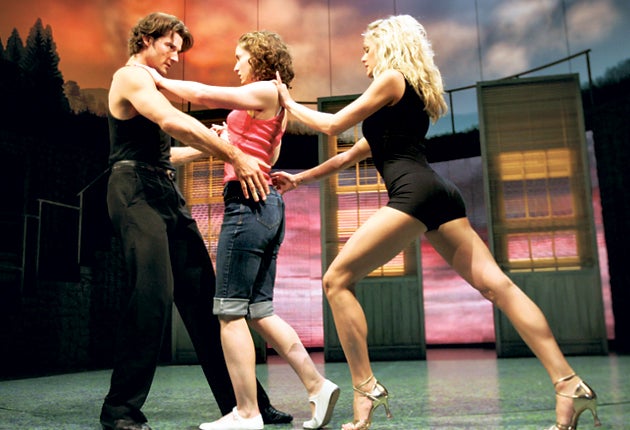Everybody's dancing
Contemporary dance is booming – from the rise in troupes such as Diversity to the huge increase in audiences at Sadler's Wells.

Your support helps us to tell the story
From reproductive rights to climate change to Big Tech, The Independent is on the ground when the story is developing. Whether it's investigating the financials of Elon Musk's pro-Trump PAC or producing our latest documentary, 'The A Word', which shines a light on the American women fighting for reproductive rights, we know how important it is to parse out the facts from the messaging.
At such a critical moment in US history, we need reporters on the ground. Your donation allows us to keep sending journalists to speak to both sides of the story.
The Independent is trusted by Americans across the entire political spectrum. And unlike many other quality news outlets, we choose not to lock Americans out of our reporting and analysis with paywalls. We believe quality journalism should be available to everyone, paid for by those who can afford it.
Your support makes all the difference.They are the two words that can still strike fear into some theatregoers' hearts – conjuring up images of muslin-clad women and half-naked men writhing rhythmically to a tuneless avant-garde orchestra. But contemporary dance is enjoying an explosion in popularity, defying its reputation with electrifying shows that audiences say they are enjoying more than any other live art form, including music, opera and theatre.
From belly dancing to ballet dancing via street dancing, dance organisations are reporting a "phenomenal" rise in interest. The latest figures from the Arts Council show that the audience for dance in the UK increased by 103 per cent between 2008 and 2009.
Sadler's Wells, Britain's leading dance theatre, reported an increase in total audiences of 56 per cent in the past six years, with the numbers attending pure contemporary dance – as opposed to hip-hop or street dancing – tripling since 2005. Kingsley Jayasekera, the company's marketing director, added: "We also put on street dance and hip-hop. But the audience for contemporary is not only growing – it is getting younger."
Caroline Miller of Dance UK, the trade body for dance organisations in Britain, described the current passion for dancing as "phenomenal". "I've been tracking audience figures since 2006," she said. "The increase of 103 per cent is part of a much bigger picture. A recent report by the Society of London Theatre showed that dance was the only live art form that was growing in London. Audience satisfaction with dance was 71 per cent – higher than for music, opera or theatre. On top of that there is the incredible success of the film StreetDance 3D."
That film, released last month and featuring last year's Britain's Got Talent winners Diversity, had the highest grossing opening weekend of any Lottery-funded film – taking £1.8m and beating Russell Crowe's Robin Hood to the top spot in the UK film charts. This week it lies in second place to Sex in the City 2.
The popularity of dancing can also be seen in the success of the musical Dirty Dancing, which is the fastest-selling West End show ever, taking £12m in advance ticket sales.
Other dance companies reporting vastly increased ticket sales include Rambert, Britain's leading contemporary dance company, and Ballet Boyz, a company started by two former Royal Ballet dancers, and who mix ballet with hip-hop and other styles. The group gave 35 per cent more performances in 2009/10 than in 2008/9 following its version of Stravinsky's The Rite of Spring on the BBC at Christmas.
"Ballet Boyz's Rite of Spring included street dance and pole dancing and older dancers," Ms Miller added. "Something is obviously happening. I don't think there's any doubt it's a growing art form. Dance is the most popular school activity after football, and the biggest among girls. The number of pupils choosing dance has risen by 83 per cent in the past four years and the number of people taking dance degrees has increased from 7,000 in 2001 to almost 19,000 in 2007. I think it's a critical mass. There's extra exposure on television. It's sociable, and also YouTube has had an enormous influence because if you like a Lady Gaga or Beyoncé routine, you can learn it from watching it on your computer."
Nadia Stern, chief executive of Rambert dance, warned that looming cuts could undermine the current dance renaissance. "The popularity of dance at the moment is staggering," she said, "and it is dance right across the board. But dance is a subsidised sector with a very small professional infrastructure. Two-thirds of professional dancers earn less than £5,000 a year. Cuts could be fatal."
Join our commenting forum
Join thought-provoking conversations, follow other Independent readers and see their replies
Comments